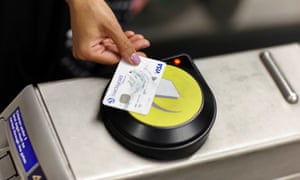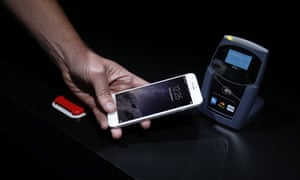
A card-carrying fan of contactless, I’m now contactless-less – and it’s not fun
By Hannah Jane Parkinson for the Guardian
Here is my problem. I have lost my debit card. This might seem like a minor hindrance. I haven’t, say, lost a limb. But I have lost the means to go about my everyday life as I usually would.
I rely on my contactless debit card as if it were a chip in my wrist. (And I don’t have a credit card, because I was always taught never to have credit cards.)
I use my contactless debit card for everything. When I encounter people who do not have contactless, I reel in horror. It’s almost as if they don’t have mobile phones. Or faces.
I get wildly irritated by shops and pubs that do not accept card payments, because it’s 2016. In supermarkets, if I have to use chip and pin, I can barely contain my fury. In a world in which being five minutes late to a tweet is considered embarrassingly tardy, it takes an awfully long time to use a chip and pin machine.
It has been estimated that contactless payment can halve the time it takes to pay with cash, but in my opinion, that’s a conservative estimate. Contactless is like swimming in liquid gold; cash is wading through treacle.

Of course, losing the ability to pay with my contactless card also means losing the ability to pay for services via all the apps on my phone linked to my debit card. No Uber for me in the past few days. No paying with YoYo. No Apple Pay.
Transport for London no longer accepts cash on buses, so a lack of debit card means trudging to the nearest shop and putting credit onto an Oyster card. (I already think of Oyster cards as relics of the past …) Usually, I use my debit card to travel, and track my travel online. It would seem entirely alien to use coins to buy a paper ticket, or a day pass. But reader, this is what I have been reduced to.

Initially, contactless wasn’t all that exciting, mostly because even shops that carried the logo stickers in their windows didn’t accept the payment. And in the beginning, contactless payments were limited to just £10, then £15, then £20. That’s, like, two beers in central London.
Since September 2015, however, contactless payments up to £30 can be made (on most cards). This does make fraudulent usage more worrying – which is why my colleagues encouraged me to cancel my lost debit card ASAP when I couldn’t find it. However, fraudulent use of contactless cards is very low. It’s less than 1p for every one pound spent, according to the UK Cards Association: far lower than ordinary card fraud.
Sometimes, I even leave it for a little while to cancel when I lose a card: a) because the card turns up in my flat when I get home in the evening, but also b) because before I cancel it, I can still use it once to pay for things with apps. For instance, if I lose my card, I can get one last Uber trip out of it before I cancel the card. Then, upon activating the new card, I just pay back the debt before I can take another trip.
I now have to wait three working days (three! working! days!) for a new card to come in the post (LOL, the post). Which means until then I will be scrabbling in my backpack for actual paper money. I don’t have a wallet, because the only thing I would ever keep in a wallet would bemy debit card, and nothing else. I don’t have kids so I don’t need dog-eared photographs of them.
In 2016, even the vending machine in the office allows contactless payment. Beats counting out change to put into a slot, and waiting for the jangle of return coins to accompany the thud of a Coke can.
Here’s how popular it is: in the first half of 2015, more than £2.5bn was spent using contactless technology, and in 2014, contactless transactions totalled more than all contactless transactions previously (contactless was introduced in 2007). There are 58 million contactless cards in the UK right now.
It’s almost as though I have forgotten to pay with cash, like the unfortunate way that – even though I work in a newsroom – I worry I am losing the ability to write by hand. I love print and magazines – but I couldn’t imagine never having access to rolling news on portable devices. Some things you just can’t turn back from.
There are, of course, like most things in life, downsides to contactless. It’s rather easy to overspend when physical cash is taken out of the equation. Bleep, bleep, bleep – and before you know it you have spent more than you thought or wished. Also, occasionally, I have been asked to sign or provide my pin, even with a contactless card, which sort of ruins it. But that’s after a succession of transactions.
Finally, perhaps the finest thing about contactless is there is not usually a charge. Often with chip and pin, a fee can be levied as banks take a cut for all of their strenuous work processing the payment. This fee is either paid for by the trader, or more often than not, passed onto the customer. Contactless payments cost less to process, so many merchants waive the fee.
There is also likely to be no minimum spend on transactions when contactless becomes compulsory in 2020. So no more buying a packet of crisps you don’t even want when down the pub.
Imagine, all those years ago: who would have thought one day modern man would be grabbing lattes with the help of their watch, or mobile phone, or a wave of a bit of plastic?
There is an argument that we all need to chill out and calm down and get back to a slower pace of life, but if I am honest, I can’t wait to get back to hopping on trains and sliding through gates and buying things with the speed of a tap. The contactless-less life is a frustrating one indeed: don’t show me the money.
First appeared at the Guardian





